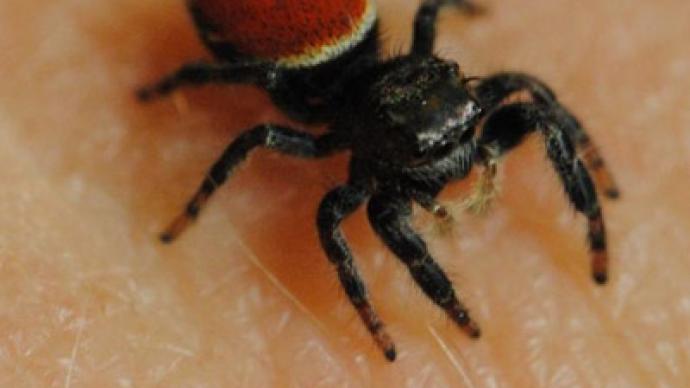Giant leap for spiders: ‘Nefertiti’ dies on Earth after 100 days on ISS

Nefertiti the jumping spider traveled into space and returned to Earth after 100 days in orbit. The first such arachnid to do so, she seemingly couldn’t handle the fame, dying after just four days on display at Washington, DC’s Smithsonian museum.
Nefertiti was chosen for the once-in-a-lifetime trip to space after winning the chance through a YouTube competition. The contest asked 14- to 18-year-olds to send in their ideas for experiments to be performed on the International Space Station (ISS).Amr Mohamed, the 18-year-old winner from Alexandria, Egypt, proposed that the Johnson Jumper (Phidippus johnsoni) spider would have difficulty catching fruit flies in space.But after spending 100 days on the ISS, Nefertiti – named after an Egyptian queen – showed that it was capable of adapting to zero-gravity and successfully caught its prey.She even developed a new technique to cope with the antigravity – sidling up to her prey rather than jumping on it.But upon returning to earth, it did take her a few days to adapt to gravity. And after just four days at the Smithsonian Natural History Museum in Washington, DC, she died of natural causes."The unexpected loss of this special animal that inspired so many imaginations will be felt throughout the museum community. The body of Nefertiti will be added to the museum's collection of specimens where she will continue to contribute to our understanding of spiders,” Kelly Carnes of the Smithsonian told the LA Times.Nefertiti’s traveling companion Cleopatra, a zebra spider, wasn’t as lucky, dying shortly after touchdown.Jumping spiders live to be about a year old, and female spiders were chosen since their male counterparts usually no longer eat when fully grown.Nefertiti was 10 months old at the time of her death, which led many to believe she was reaching her expiration date anyway.The Smithsonian already has Arabella and Anita, the first spiders to spin webs in space back in 1973. However, the pair never made it back to Earth, dying on the first US space station, Skylab.












